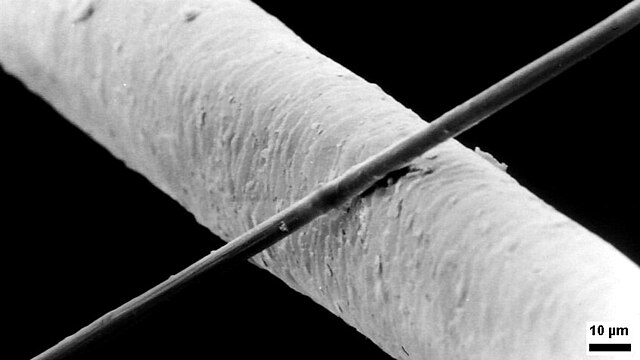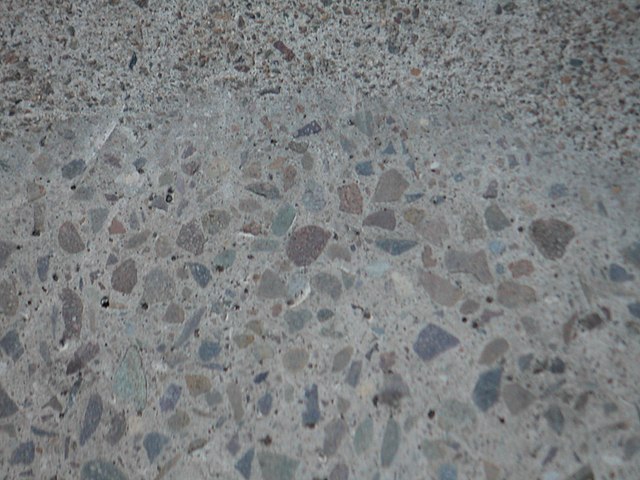Syntactic foams are composite materials synthesized by filling a metal, polymer, cementitious or ceramic matrix with hollow spheres called microballoons or cenospheres or non-hollow spheres as aggregates. In this context, "syntactic" means "put together." The presence of hollow particles results in lower density, higher specific strength, lower coefficient of thermal expansion, and, in some cases, radar or sonar transparency.
Syntactic foam, shown by scanning electron microscopy, consisting of glass microspheres within a matrix of epoxy resin.
Syntactic foam sphere used as a subsurface float in oceanographic mooring.
A composite material is a material which is produced from two or more constituent materials. These constituent materials have notably dissimilar chemical or physical properties and are merged to create a material with properties unlike the individual elements. Within the finished structure, the individual elements remain separate and distinct, distinguishing composites from mixtures and solid solutions. Composite materials with more than one distinct layer are called composite laminates.
A black carbon fibre (used as a reinforcement component) compared to a human hair
Concrete is a mixture of adhesive and aggregate, giving a robust, strong material that is very widely used.
Plywood is used widely in construction
Composite sandwich structure panel used for testing at NASA






